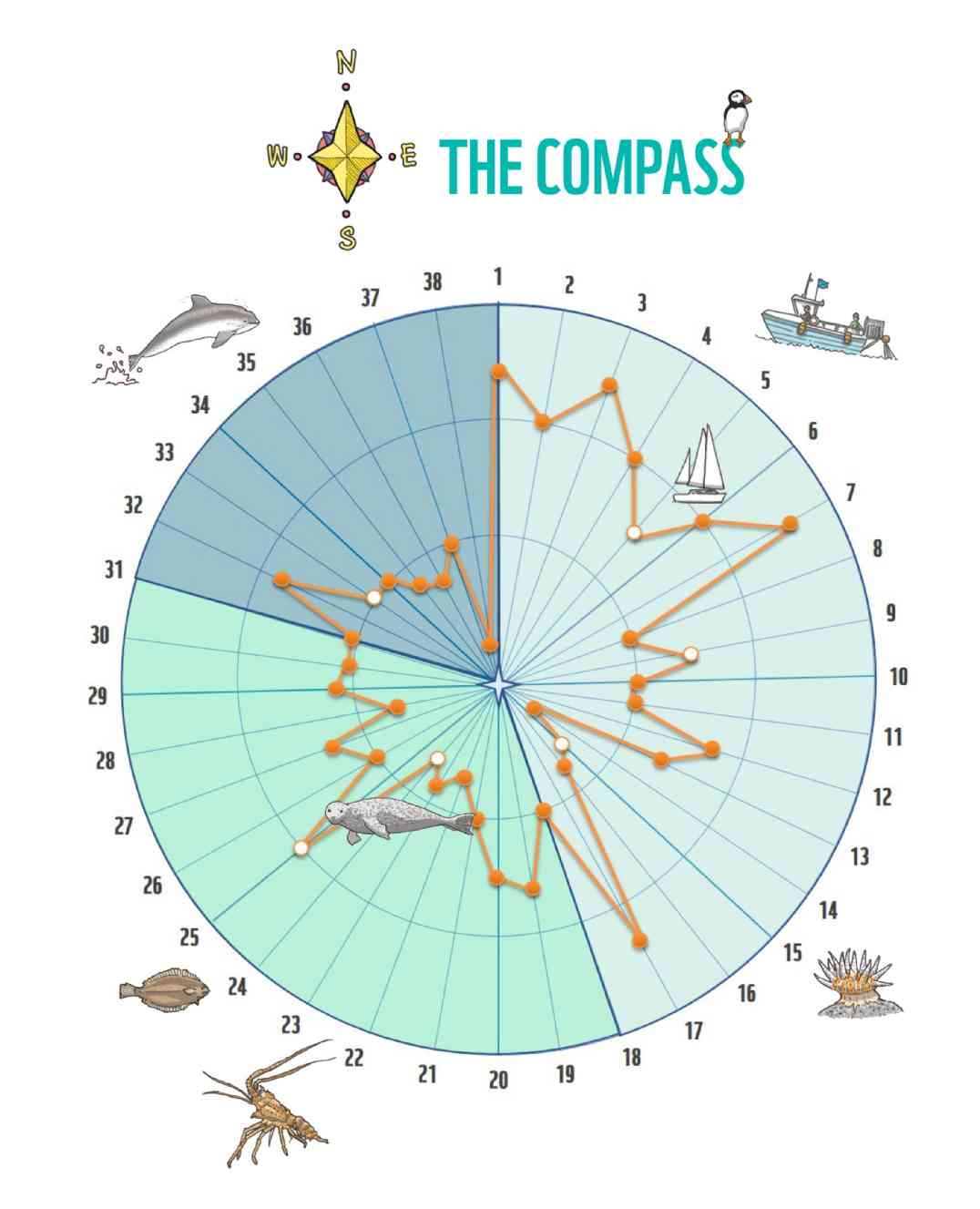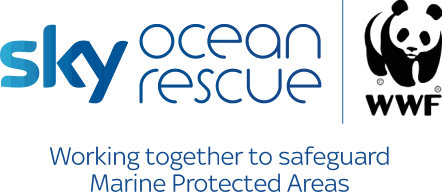
Marine Governance
Many people benefit from and use the seas around us, but who should be responsible for making decisions about the use and management of the sea?
The UK SEAS team is taking a fresh look at how we manage our seas – recognising the importance of including people who use and depend on the area in management. Having good engagement with the people on the ground makes sure that management decisions are useful, inclusive and sustainable.
The UK SEAS team also appreciate that in times of funding cuts and change to many government departments, it is increasingly important to work together in partnership, in order to make the most of opportunities, bring wider benefits and reduce costs.
Management Effectiveness
The UK has committed to having a well-managed network of Marine Protected Areas (for example through the Convention of Biological Diversity and OSPAR convention), but what does well managed mean and how will we know when we achieve it?
In order to answer this question, the UK SEAS team developed a tool to track and monitor our progress to achieving a ‘well-managed’ status.
The tool is composed of 38 criteria, all of which are necessary in order for a Marine Protected Area to be truly well managed. Each criteria is given a score between 0-3, with 0 being the lowest and 3 being the highest. This tool identifies where a Marine Protected Area is doing well and areas for improvement, it also allows comparisons to be made between Marine Protected Areas both nationally and internationally.
Read our report of the compass pilot in North Devon.
The compass is on tour!
East Riding Council and the University of York are using our Compass method to assess two MPAs along the Yorkshire coastline – Runswick Bay MCZ (Marine Conservation Zone) and Flamborough Head EMS (European Marine Site). These are two very different sites at different stages of the MPA management process. Using the Compass will help their team determine where things are going well, and where more resource could be provided to improve management effectiveness. If you’d like to help out and complete the survey please email: Emily.wordley@yahoo.com
You can watch a short film about how the University of York is using The Compass.

Keith Hiscock
WWF’s UK SEAS project is all about trying to improve how marine protected areas (MPAs) in the UK are managed. We hope to do this by testing new approaches to management in our case study areas in North Devon (with the North Devon Marine Pioneer) and in the Outer Hebrides. The first step in that journey is to understand how they are being managed at the moment, to gather baseline information on where we are doing really well, and where we could focus energy on improving. The Compass survey forms part of that baseline assessment. It’s a pretty neat technique.
The Compass divides the process of establishing an MPA into three stages:
- The Creation phase: In the UK we would call that the ‘designation process’. This involves gathering all the data needed and working with stakeholders to develop management rules.
- The Pioneer phase: The pioneer phase is when management becomes operational and the management team starts monitoring and building programmes to support delivery of the objectives.
- The Self-sufficiency phase: By this point the MPA is well on the way to technical, organisational and financial self-sufficiency and the environmental and social benefits of the MPA are being felt.
Progress is measured using 38 criteria that cover a range of management issues including things like setting objectives, collecting information, creating plans, involving stakeholders and monitoring etc. Each criteria is scored out of 3, from 0 = it is not being done, to 3 = it is being done really well. The criteria are arranged around the outside of the compass. The stages and criteria may vary somewhat from one MPA to the next, however to achieve effective MPA management all of them need to be considered at some point. A quick look at the results will tell you what stage the MPA is at (creation, pioneer or self-sufficiency) and what the MPA is doing well on and what it needs to improve. The tool can be used to track the course of MPA development over time and help managers with day-to-day organisation of their MPA by filling in the progress made year after year.

1 Identify important areas for species & habitats
2 Identify stakeholders & their interests
3 Set up stakeholder participation process
4 Assess condition of important areas for species & habitats
5 Create socio-economic baseline
6 Identify pressures impacting species & habitats
7 Set MPA boundary based on areas of ecological importance
8 Establish zoning for activities
9 Establish management rules for zoned areas
10 Create a management body to set and monitor strategy
11 Create a management committee to implement the strategy
12 Establish environmental MPA objectives
13 Established socio-economic MPA objectives
14 Identify benefit sharing rules
15 Develop alternatives for displaced activities
16 Create clear lines of responsibility for governance
17 Ensure the MPA has legal status
18 Publicly communicate about the MPA
19 Support an active & inclusive stakeholder engagement process
20 Develop a management plan
21 Ensure adequate MPA staff
22 Ensure adequate infrastructures and equipment
23 Enforce management rules
24 Create a business plan fund long-term MPA management
25 Capacity build skills needed to run the MPA
26 Create education programme linked to MPA objectives
27 Monitor biological, social and economic factors
28 Monitor management activities against performance
29 Build a sense of responsibility for the MPA by stakeholders
30 Demonstrate the authorities take responsibility for the MPA
31 Effectively implement the management plan
32 Sustain & build on community involvement
33 Demonstrate that MPA is achieving objectives
34 Demonstrate that MPA is improving ecological condition
35 Demonstrate that MPA is providing socio-economic benefits
36 Report progress to the community
37 Update management plan/rules based on monitoring data
38 Create sustainable income stream to cover management costs
|
Phase |
Criterion |
Score |
|---|---|---|
|
Creation phase |
Identify important areas for species & habitats |
3 |
|
Identify stakeholders & their interests |
3 |
|
|
Set up stakeholder participation process |
3 |
|
|
Assess condition of important areas for species & habitats |
3 |
|
|
Create socio-economic baseline |
3 |
|
|
Identify pressures impacting species & habitats |
3 |
|
|
Identify threats likely to impact species & habitats |
2 |
|
|
Set MPA boundary based on areas of ecological importance |
1 |
|
|
Establish zoning for activities |
3 |
|
|
Establish management rules for zoned areas |
3 |
|
|
Create a management body to set and monitor strategy |
2 |
|
|
Create a management committee to implement the strategy |
2 |
|
|
Establish environmental MPA objectives |
3 |
|
|
Established socio-economic MPA objectives |
3 |
|
|
Identify benefit sharing rules |
3 |
|
|
Develop alternatives for displaced activities |
2 |
|
|
Create clear lines of responsibility for governance |
1 |
|
|
Build a sense of responsibility for the MPA by stakeholders |
1 |
|
|
Ensure the MPA has legal status |
2 |
|
|
Pioneer phase |
Publicly communicate about the MPA |
1 |
|
Support an active & inclusive stakeholder engagement process |
2 |
|
|
Enforce management rules |
3 |
|
|
Ensure adequate MPA staff |
1 |
|
|
Ensure adequate infrastructures and equipment |
0 |
|
|
Create a business plan fund long-term MPA management |
0 |
|
|
Develop a management plan |
0 |
|
|
Capacity build skills needed to run the MPA |
1 |
|
|
Create education programme linked to MPA objectives |
1 |
|
|
Monitor biological, social and economic factors |
2 |
|
|
Monitor management activities against performance |
1 |
|
|
Self-sufficiency phase |
Demonstrate the authorities take responsibility for the MPA |
0 |
|
Effectively implement the management plan |
1 |
|
|
Sustain & build on community involvement |
1 |
|
|
Demonstrate that MPA is achieving objectives |
0 |
|
|
Demonstrate that MPA is improving ecological condition |
0 |
|
|
Demonstrate that MPA is providing socio-economic benefits |
1 |
|
|
Review the benefit sharing rules |
2 |
|
|
Report progress to the community |
0 |
|
|
Update management plan/rules based on monitoring data |
1 |
|
|
Create sustainable income stream to cover management costs |
0 |
 Joint
Joint External
External UK SEAS
UK SEAS
 Organising
Organising Presenting
Presenting Workshop
Workshop Attending
Attending Of interest
Of interest
Reports
 UK Marine Protected Areas: Why Management Matters
UK Marine Protected Areas: Why Management Matters
Date: 13th January, 2020
Download PDF ![]()
 Second Kenya Marine Knowledge Exchange workshop
Second Kenya Marine Knowledge Exchange workshop
Date: 29th August, 2019
Download PDF ![]()
 The compass pilot report for North Devon
The compass pilot report for North Devon
Date: 9th April, 2019
Download PDF ![]()
 UK SEAS leaflet 2019
UK SEAS leaflet 2019
Date: 21st January, 2019
Download PDF ![]()
Upcoming Meetings & Workshops
We will keep you updated on future meetings for Marine Governance. This list will be updated when meetings are taking place.
Previous Meetings & Workshops
 Coastal Partnership Network Annual Forum
Coastal Partnership Network Annual Forum
Date: 27th – 28th November, 2018
Location: Cardiff
Read more +
 North Devon Biosphere Reserve Partnership Meeting
North Devon Biosphere Reserve Partnership Meeting
Date: 15th November, 2018
Location: Torrington
Read more +
 Severn Estuary Forum 2018
Severn Estuary Forum 2018
Date: 9th October, 2018
Location: Newport, Wales
Read more +
 Lundy Management Forum
Lundy Management Forum
Date: 4th October, 2018
Location: Croyde, North Devon
Read more +
